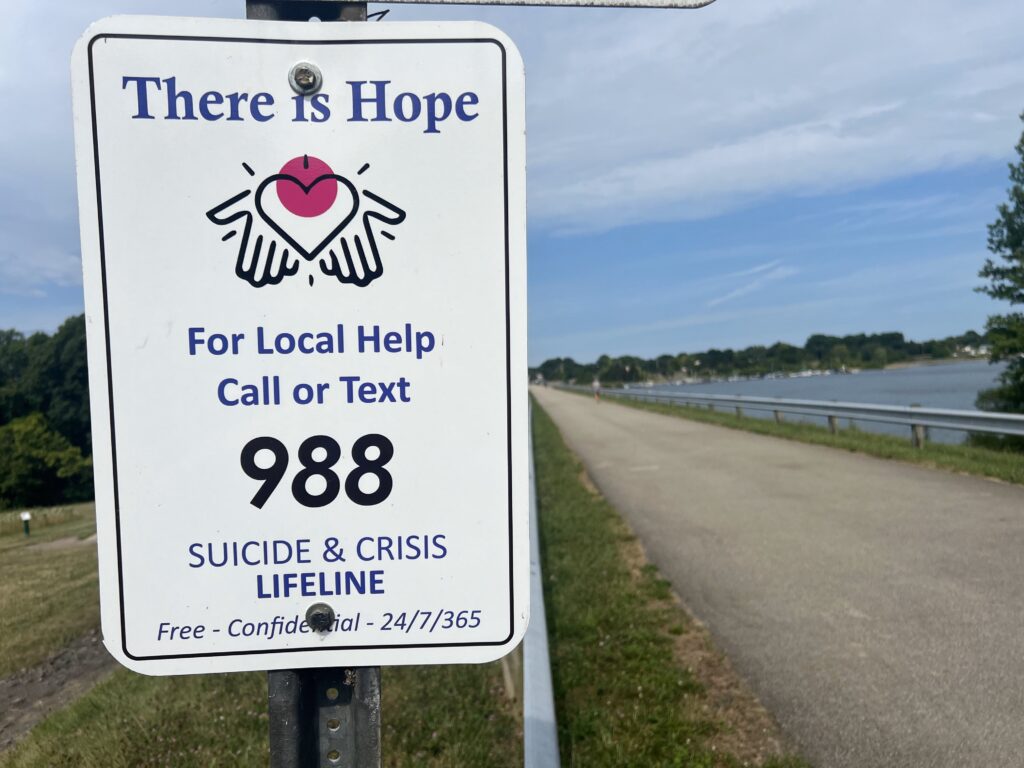Editor’s note: This story includes mention of suicide and mental health crisis.
If you or someone you know is in crisis, call or text 988, or visit
988lifeline.org
.
When the Trump administration announced that they would officially cut LGBTQ-specific suicide prevention services, I felt myself wilting. Images flashed through my mind, faces real and imaginary of struggling queer youth, sure of nothing besides their own otherness. The loneliness was palpable. So was the pain.
These faces were all too familiar. I used to see a similar one when I looked in the mirror.
Fourteen years old and all too aware of my nonconformity, I drifted through the hallways with my beanie low over my face, arms crossed like my life depended on it. I had built myself a set of armor, but I didn’t feel safe. I just felt alone.
My eighth grade year passed in silence, eyes downcast and shoulders slumped. Then, I started high school. I built a network of supportive friends and had honest conversations with my parents, who thankfully proved to be supportive too. Months passed, and I began to smile again. I squared my shoulders and met my classmates’ gazes when we spoke. Maybe I did belong here. At the very least, I had realized I wasn’t alone. Some of us aren’t that lucky.
It’s common knowledge that queer youth are far more
prone to isolation
than their straight cisgender peers. They also die by suicide at a rate over
four times greater
than non-LGTBQ+ teens, according to the Trevor Project.
However, the same dataset points out that being queer or transgender is not a suicide risk in it of itself. The true cause is the ostracization and isolation that LGBTQ+ youth often experience in their communities. After all, the Mayo Clinic
lists
discrimination, loneliness and stressful family situations as risk factors for suicide.
To this end, a logical means of reducing an individual’s likelihood of harming themself is demonstrating that they are not alone. The LGBTQ Youth Specialized Services program, available via the 988 Crisis and Suicide Lifeline since 2022, has filled this need, fielding
nearly 1.3 million calls
in just three years, according to the Substance Abuse and Mental Health Services Administration.
As of July 17, queer teens dialing 988 will no longer have the opportunity to “press 3” to utilize this targeted resource. They will, of course, still be provided with support, but the voice on the other end of the line will no longer be trained to handle the specific struggles that come with navigating queer adolescence.
LGBTQ+ youth are already more likely to experience discrimination, loneliness and depression than their peers. As a nation, it is our responsibility to ensure that they feel connected and supported.
As is typical of politics, the current administration has allowed their ideology to overshadow the two most important aspects of governmental decision making — statistical evidence and human impact — allowing one of the most at-risk demographic groups to struggle in silence.
— Lauren Shein, Summit High School
This commentary was produced by a student reporter as part of the High School Journalism Institute, an annual collaboration among The Oregonian/OregonLive, Oregon State University and other Oregon media organizations. For more information or to support the program, go to
oregonlive.com/hsji
.





More Stories
Commentary: Suicide hotline cuts deepen isolation among LGBTQ+ youth
Commentary: Suicide hotline cuts deepen isolation among LGBTQ+ youth
Commentary: Suicide hotline cuts deepen isolation among LGBTQ+ youth